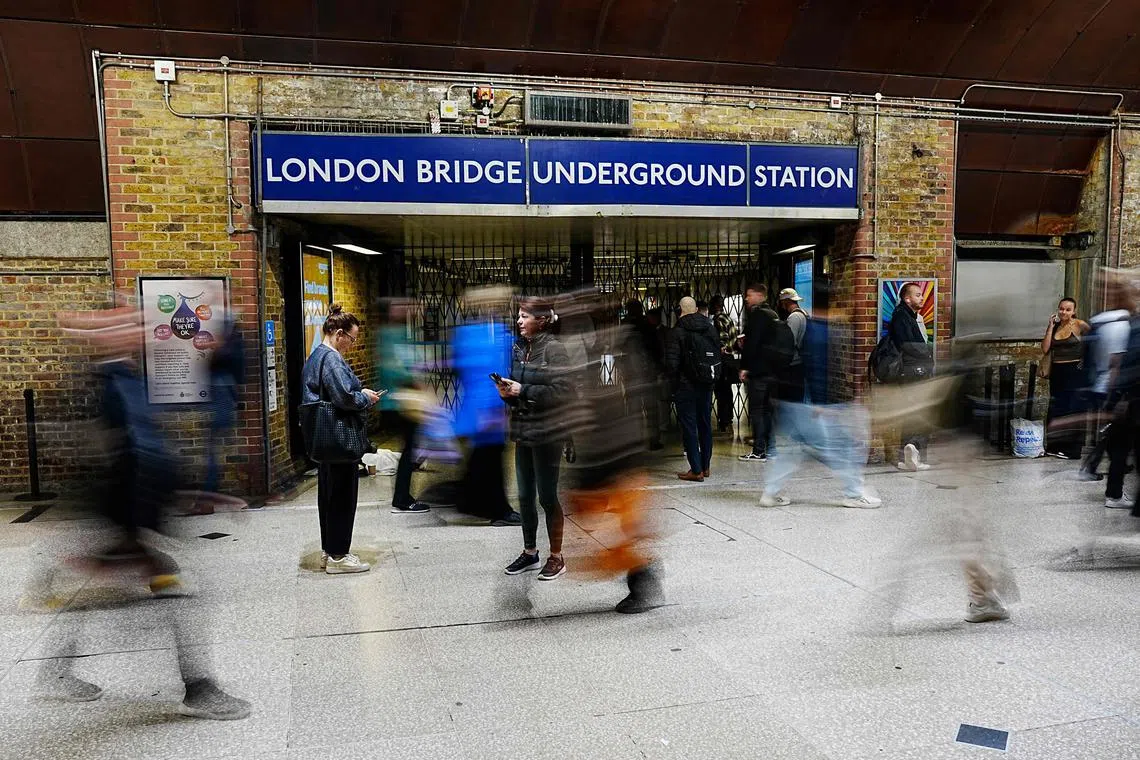London’s commuters face travel chaos as Tube strike hits hard
Sign up now: Get ST's newsletters delivered to your inbox

All fleet staff as well as engineering, station and train workers walk out on Sept 8, causing chaos for the British capital’s commuters.
PHOTO: AFP
Follow topic:
LONDON – Londoners face severe travel disruption as a seven-day strike by workers on the city’s underground train network entered full force on Sept 8.
The capital’s Tube lines were mostly suspended due to the industrial action by engineering, station and train workers that is expected to cause chaos for commuters most of this week.
Services on the National Rail, Elizabeth Line and the Overground were also affected as some routes run over London Underground tracks and through Tube stations.
There were long queues for buses.
Staff are protesting over pay and working conditions.
TFL on Sept 5 urged the RMT to suspend the strike action, saying it should put its 3.4 per cent pay rise offer to staff. The union launched the ballot before any offer was made, it added.
Services on the Docklands Light Railway, which runs to the key financial district of Canary Wharf, will also be impacted by a separate strike, with no service on Sept 9 and 11.
The walkouts could cost the economy £230 million (S$400 million), according to estimates by the Centre for Economics and Business Research. That doesn’t include wider impacts such as reduced consumer spending and lost productivity, according to Mr Pushpin Singh, managing economist at CEBR.
Stores, restaurants and bars in central London are expected to suffer from the most from the walkouts. Many workers in the city, particularly finance professionals, are able to carry out their jobs remotely at home, reducing the impact of the strikes.
The disruption, which began late last week when some depot operational control managers went on strike in west London, is expected to continue until the morning of Sept 12, according to TFL. Bloomberg

